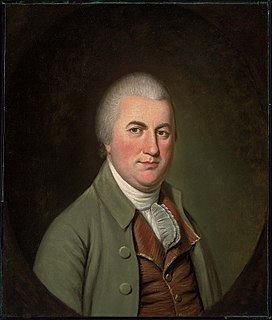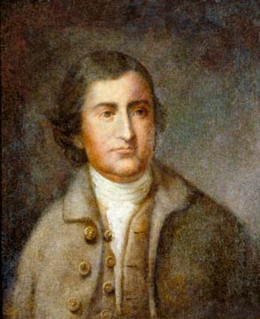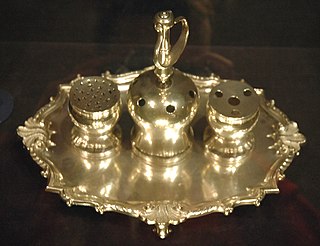 W
WConstitution Day is an American federal observance that recognizes the adoption of the United States Constitution and those who have become U.S. citizens. It is normally observed on September 17, the day in 1787 that delegates to the Constitutional Convention signed the document in Philadelphia.
 W
WThe Constitutional Convention took place from May 25 to September 17, 1787, in the old Pennsylvania State House in Philadelphia. Although the convention was intended to revise the league of states and first system of government under the Articles of Confederation, the intention from the outset of many of its proponents, chief among them James Madison of Virginia and Alexander Hamilton of New York, was to create a new government rather than fix the existing one. The delegates elected George Washington of Virginia, former commanding general of the Continental Army in the late American Revolutionary War (1775–1783) and proponent of a stronger national government, to become President of the convention. The result of the convention was the creation of the Constitution of the United States, placing the Convention among the most significant events in American history.
 W
WOliver Ellsworth was an American lawyer, judge, politician, and diplomat. He was a framer of the United States Constitution, a United States Senator from Connecticut, and the third Chief Justice of the United States. Additionally, Ellsworth received 11 electoral votes in the 1796 presidential election.
 W
WNathaniel Gorham, his first name is sometimes spelled Nathanial) was a politician and merchant from Massachusetts. He was a delegate from Massachusetts to the Continental Congress, and for six months served as the presiding officer of that body. He also attended the Constitutional Convention, served on its Committee of Detail, and was one of the signers of the United States Constitution on September 17, 1787, in Philadelphia, Pennsylvania.
 W
WWilliam Houston, also spelled Houstoun, was an American planter, lawyer and statesman. He served the Province of Georgia as a delegate to the Continental Congress and later the State of Georgia to the United States Constitutional Convention in 1787.
 W
WIndependence Hall is the building where both the United States Declaration of Independence and the United States Constitution were debated and adopted. It is now the centerpiece of the Independence National Historical Park in Philadelphia, Pennsylvania.
 W
WEdmund Jennings Randolph was an American attorney and politician. He was the 7th Governor of Virginia, and, as a delegate from Virginia, he attended the Constitutional Convention and helped to create a national constitution. He was the 1st United States Attorney General and subsequently the 2nd Secretary of State during George Washington's presidency.
 W
WJohn Rutledge was an Associate Justice of the Supreme Court of the United States and its second Chief Justice. Additionally, he served as the first President of South Carolina and later as its first governor after the Declaration of Independence.
 W
WThe Syng inkstand is a silver inkstand used during the signing of the United States Declaration of Independence in 1776 and the United States Constitution in 1787. Besides paper documents, it is one of four still-existing objects that were present during the Constitutional Convention, along with the Liberty Bell, the chair that George Washington sat in as the Constitutional Convention's presiding officer, and Independence Hall itself.
 W
WThe drafting of the Constitution of the United States began on May 25, 1787, when the Constitutional Convention met for the first time with a quorum at the Pennsylvania State House in Philadelphia, Pennsylvania to revise the Articles of Confederation, and ended on September 17, 1787, the day the Constitution drafted by the convention's delegates to replace the Articles was adopted and signed. The ratification process for the Constitution began that day, and ended when the final state, Rhode Island, ratified it on May 29, 1790. In addition to key events during the Constitutional Convention and afterward while the Constitution was before the states for their ratification, this timeline includes important events that occurred during the run-up to the convention and during the nation's transition from government under the Articles of Confederation to government under the Constitution, and concludes with the unique ratification vote of Vermont, which at the time was a sovereign state outside the Union. The time span covered is 5 years, 9 months, from March 25, 1785 to January 10, 1791.
 W
WThe Virginia Plan was a proposal to the United States Constitutional Convention for the creation of a supreme national government with three branches and a bicameral legislature. The plan was drafted by James Madison while he waited for a quorum to assemble at the Constitutional Convention of 1787.
 W
WJames Wilson was one of the Founding Fathers of the United States and a signatory of the United States Declaration of Independence and the United States Constitution. Wilson was elected twice to the Continental Congress, where he represented Pennsylvania, and was a major force in drafting the United States Constitution. A leading legal theorist, he was one of the six original justices appointed by George Washington to the Supreme Court of the United States, and in his capacity as first Professor of Law at University of Pennsylvania taught the first course on the new Constitution to President Washington and his cabinet in 1789 and 1790.